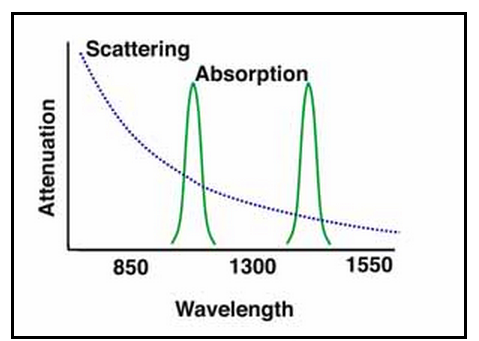Understanding Wavelengths in Fiber Optics
Fiber optics is full of jargon but it's important to understand it. One of the most confusing but popular term is "wavelength." It sounds very scientific, but it is simply the term used to define what we think of as the color of light. Light is part of the "electromagnetic spectrum" that also includes x-rays, ultraviolet radiation, microwaves, radio, TV, cell phones, and all the other wireless signals. They are simply electromagnetic radiation of different wavelengths. This article will give you a guide to wavelengths in fiber optics.
In fact, light is defined by its wavelength. It is a member of the frequency spectrum, and each frequency (sometimes also called color) of light has a wavelength associated with it. Wavelength and frequency are related. Generally, the radiation of shorter wavelengths are identified by their wavelengths, while the longer wavelengths are identified by their frequency.
For fiber optics with glass fibers, we use light in the infrared region which has wavelengths longer than visible light, typically around 850, 1300 and 1550 nm. Why do we use the infrared? Because the attenuation of the fiber is much less at those wavelengths. The attenuation of glass optical fiber is caused by two factors, absorption and scattering. Absorption occurs in several specific wavelengths called water bands due to the absorption by minute amounts of water vapor in the glass.

Fiber optic transmission wavelengths are determined by two factors: longer wavelengths in the infrared for lower loss in the glass fiber and at wavelengths which are between the absorption bands. Wavelengths typically range from 800 nm to 1600 nm, but by far the most common wavelengths used in fiber optics are 850 nm, 1300 nm and 1550 nm. Multimode fiber is designed to operate at 850 nm and 1300 nm, while single-mode fiber is optimized for 1310 nm and 1550 nm. For example, Finisar FTLF8519P2BNL SFP transceiver operates at a wavelength of 850 nm over multimode fiber, while Cisco GLC-ZX-SM compatible SFP transceiver operates at a wavelength of 1550 nm over single-mode fiber. The difference between 1300 nm and 1310 nm is simply a matter of convention. Both lasers and LEDs are used to transmit light through optical fiber. Lasers are usually used for 1310nm or 1550nm single-mode applications. LEDs are used for 850nm or 1300nm multimode applications.
Our eyes are sensitive to light which lies in a very small region of the electromagnetic spectrum labeled "visible light". This "visible light" corresponds to a wavelength range of 400 - 700 nm and a color range of violet through red. The human eye is not capable of "seeing" radiation with wavelengths outside the visible spectrum. The visible colors from shortest to longest wavelength are: violet, blue, green, yellow, orange, and red. Ultraviolet radiation has a shorter wavelength than the visible violet light. Infrared radiation has a longer wavelength than visible red light. The white light is a mixture of the colors of the visible spectrum. Black is a total absence of light.
After reading this passage, you may know some basic knowledge of wavelengths in fiber optics. Since the attenuation of the wavelengths at 850 nm, 1300 nm, and 1550 nm are relatively less, they are the most three common wavelengths used in fiber optic communication. As one of the main fiber optical manufacturers in China, Fiberstore supplies a wide range of multimode and single-mode fiber optic transceivers which operate at wavelengths of 850 nm, 1310 nm as well as 1550nm.
